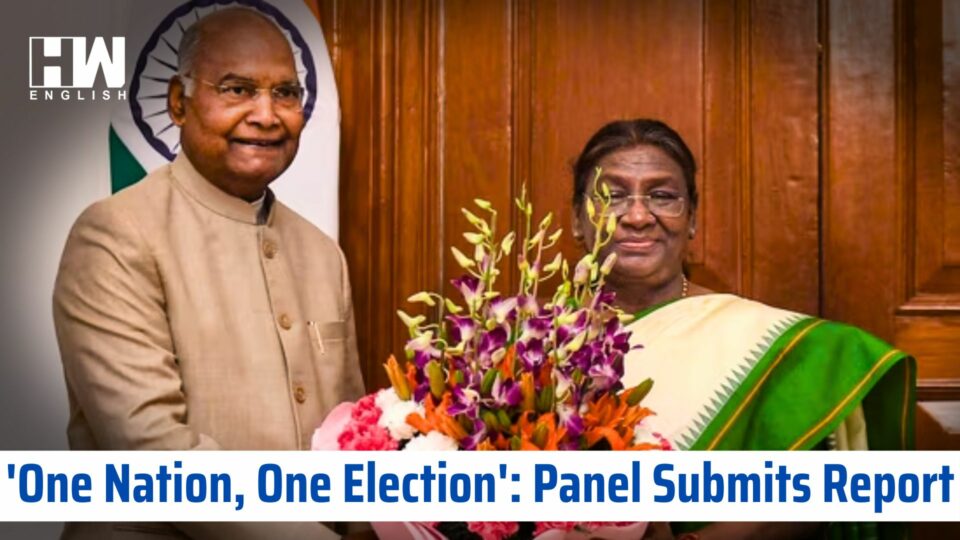The high-level committee on “One Nation, One Election”, headed by former President Ram Nath Kovind, submitted its report to President Droupadi Murmu on March 14. The committee met the President of India at Rashtrapati Bhavan in New Delhi.
The report goes into thousands of pages and has made plenty of suggestions on how this idea could be executed.
Supporters argue that simultaneous elections offer substantial cost savings, streamline administrative processes, and potentially increase voter turnout. Reports indicate that the 2019 Lok Sabha elections incurred an expense of approximately Rs 60,000 crore, encompassing costs borne by political parties and the Election Commission of India. Additionally, significant expenses are associated with the repeated deployment and transfer of security personnel, impacting regular government operations due to election duties
Proponents also say simultaneous elections may save time, and the government can get five stable years to focus on governance instead of winning polls.
However, those who oppose the idea say holding national and state elections together could lead to the dominance of national issues over local interests. Additionally, ensuring an adequate supply of Electronic Voting Machines (EVMs) and polling and security personnel present logistical challenges.
This concept is not new. India has followed it in the past, with elections held simultaneously in 1952, 1957, 1962, and 1967.
However, in 1968 and 1969, some state assemblies were dissolved prematurely, followed by the dissolution of the Lok Sabha in 1970. This forced a change in electoral schedules for the states and the country.
In 2023, a high-level committee led by former President Ramnath Kovind was established to examine and recommend holding simultaneous elections to the Lok Sabha, state assemblies, municipalities, and panchayats.
ALSO READ: Centre Blocks 18 OTT Platforms For ‘Nudity And Sexual Acts’
Since then, this committee has held discussions with representatives from various political parties, including the BJP, Trinamool Congress, Samajwadi Party, and Communist Party of India (CPI), to understand their views. These party delegates have submitted their suggestions in writing to the committee.
Additionally, the committee has recently sought public opinion on the matter of ‘One Nation, One Election.’
And now, nearly seven months later, the committee has handed over its report to President Murmu in the presence of all its members, including Union Home Minister Amit Shah, Law Minister Arjun Ram Meghwal, Democratic Progressive Azad Party (DPAP) chief Gulam Nabi Azad, and others.
What Does the panel suggest?
1. It proposes a phased approach to implementing simultaneous elections by 2029. Initially, Lok Sabha and state assembly elections will be held, followed by local body polls within 100 days as the second step.
- In the event of a hung House or a no-confidence motion, the panel suggests conducting fresh polls for the remaining term of five years.
- For the first round of simultaneous elections, the tenure of all state assemblies could conclude leading up to subsequent Lok Sabha elections.
- It is recommended that the Election Commission, in collaboration with state poll authorities, prepare a unified electoral roll and issue voter ID cards for Lok Sabha, assembly, and local body elections.
- The panel advises increasing equipment, personnel, and security forces to facilitate simultaneous polls effectively.
- The panel suggests that simultaneous elections would catalyze the development process and foster social cohesion, thereby strengthening the foundations of democracy.
- As the panel recommended, implementing a one-nation, one-election will boost transparency, inclusivity, and voters’ confidence.
As an independent media platform, we do not take advertisements from governments and corporate houses. It is you, our readers, who have supported us on our journey to do honest and unbiased journalism. Please contribute, so that we can continue to do the same in future.

